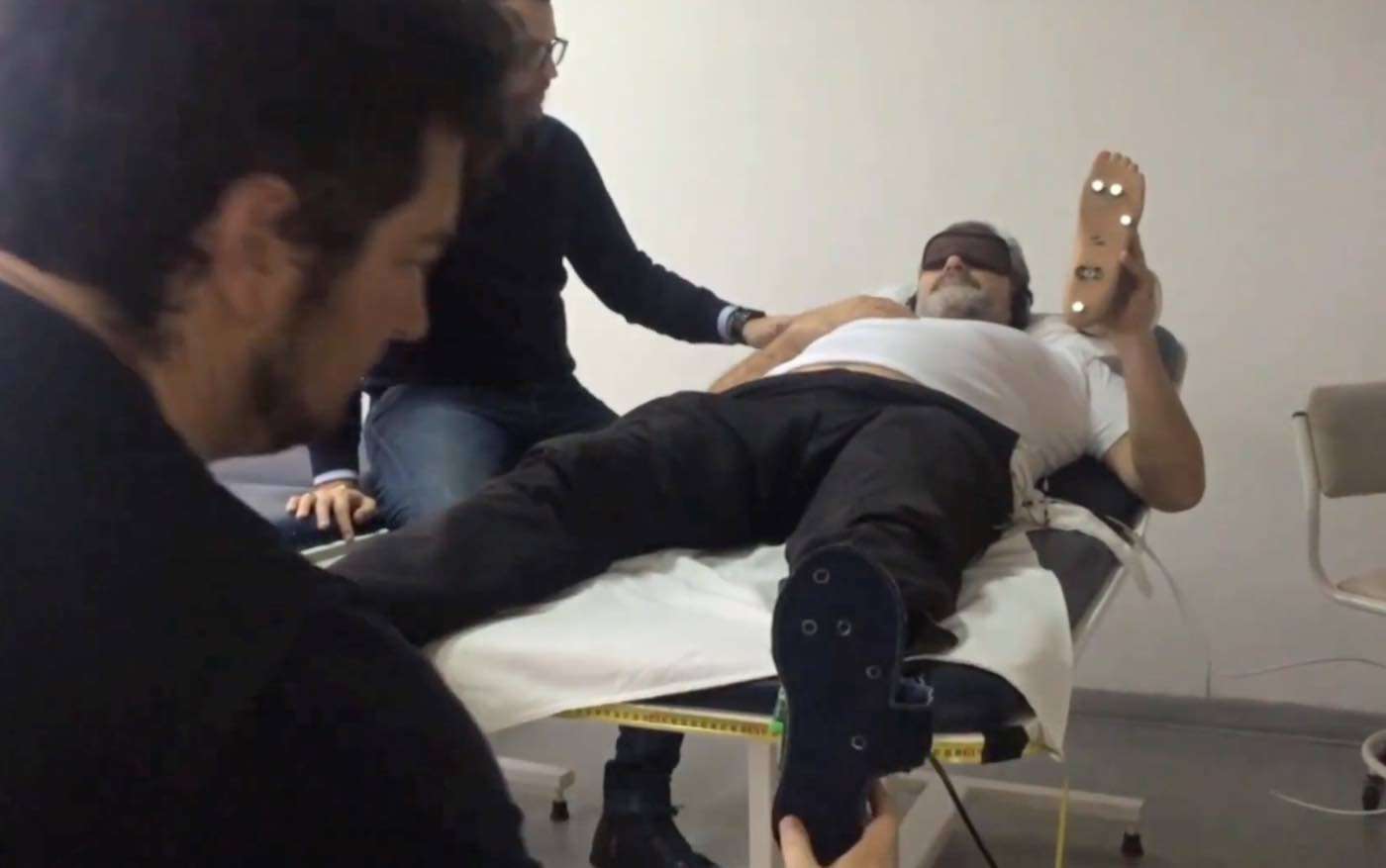Dementia Cases Have Declined by 13% in US and Europe Every Decade Since 1988, Researchers Found
Harvard researchers have found that dementia cases have declined by 13% in the US and Europe every decade since 1988.

Scientists have helped three amputees "merge" with their bionic prosthetic legs so they can use and feel their the limb as if it's a part of their own body.
The amputees were able to climb over various obstacles without having to look thanks to sensory feedback from the prosthetic leg that is delivered to nerves in the leg's stump.
Djurica Resanovic lost his leg in a motorbike accident several years ago which resulted in amputation above the knee. Thanks to novel neuroprosthetic leg technology, Resanovic was successfully connected to his bionic leg during clinical trials in Belgrade, Serbia.
"After all of these years, I could feel my leg and my foot again, as if it were my own leg," reports Resanovic about the bionic leg prototype. "It was very interesting. You don't need to concentrate to walk, you can just look forward and step. You don't need to look at where your leg is to avoid falling."
Scientists from a European consortium led by Swiss Institutions, ETH Zurich and EPFL spin-off SensArs Neuroprosthetics, with clinical trials in collaboration with institutions in Belgrade, Serbia, successfully characterized and implemented bionic leg technology with three amputees. The results appear in this week's issue of Science Translational Medicine.
"We showed that less mental effort is needed to control the bionic leg because the amputee feels as though their prosthetic limb belongs to their own body," explains Stanisa Raspopovic, the ETH Zurich professor who led the study.
"This is the first prosthesis in the world for above-knee leg amputees equipped with sensory feedback," he continued. "We show that the feedback is crucial for relieving the mental burden of wearing a prosthetic limb which, in turn, leads to improved performance and ease of use."
Wearing a blindfold and earplugs, Resanovic could feel his bionic leg prototype thanks to sensory information that was delivered wirelessly via electrodes surgically placed into the stumps' intact nervous system. These electrodes pierce through the intact tibial nerve instead of wrapping around it. This approach has already proven to be efficient for studies of the bionic hand led by Silvestro Micera, co-author of the publication, EPFL's Bertarelli Foundation Chair in Translational Neuroengineering.
Resanovic continues: "I could tell when they touched the [big toe], the heel, or anywhere else on the foot. I could even tell how much the knee was flexed."
Resanovic is one of three leg amputees, all with transfemoral amputation, who participated in a three-month clinical study to test new bionic leg technology which literally takes neuroengineering a step forward, providing a promising new solution for this highly disabling condition that affects more than 4 million people in Europe and in the United States.
Thanks to detailed sensations from sole of the artificial foot and from the artificial knee, all three patients could maneuver through obstacles without the burden of looking at their artificial limb as they walked. They could stumble over objects yet mitigate falling. Most importantly, brain imaging and psychophysical tests confirmed that the brain is less solicited with the bionic leg, leaving more mental capacity available to successfully complete the various tasks.
These results complement a recent study that demonstrated the clinical benefits of the bionic technology, like reducing phantom limb pain and fatigue.
"We develop the sensory feedback technology to augment prosthetic devices," explains Francesco Petrini, CEO and co-founder of SensArs Neuroprosthetics, and who is guiding an effort to bring these technologies to market. "An investigation longer than 3 months, with more subjects, and with in-home assessment, should be executed to provide more robust data to draw clinically significant conclusions about an improvement of the health and quality of life of patients."
The fundamental neuroengineering principle is about merging body and machine. It involves imitating the electrical signals that the nervous system would have normally received from the person's own, real leg. Specifically, the bionic leg prototype is equipped with 7 sensors all along the sole of the foot and 1 encoder at the knee that detects the angle of flexion. These sensors generate information about touch and movement from the prosthesis. Next, the raw signals are engineered via a smart algorithm into biosignals which are delivered into the stump's nervous system, into the tibial nerve via intraneural electrodes, and these signals reach the brain for interpretation.
"We believe intraneural electrodes are key for delivering bio-compatible information to the nervous system for a vast number of neuroprosthetic applications. Translation to the market is just around the corner," explains Silvestro Micera, co-author of the publication.
Reprinted from the Ecole Polytechnique Fédérale de Lausanne
(WATCH the video below)
Be Sure And Share The Groundbreaking News With Your Friends On Social Media…
Be the first to comment